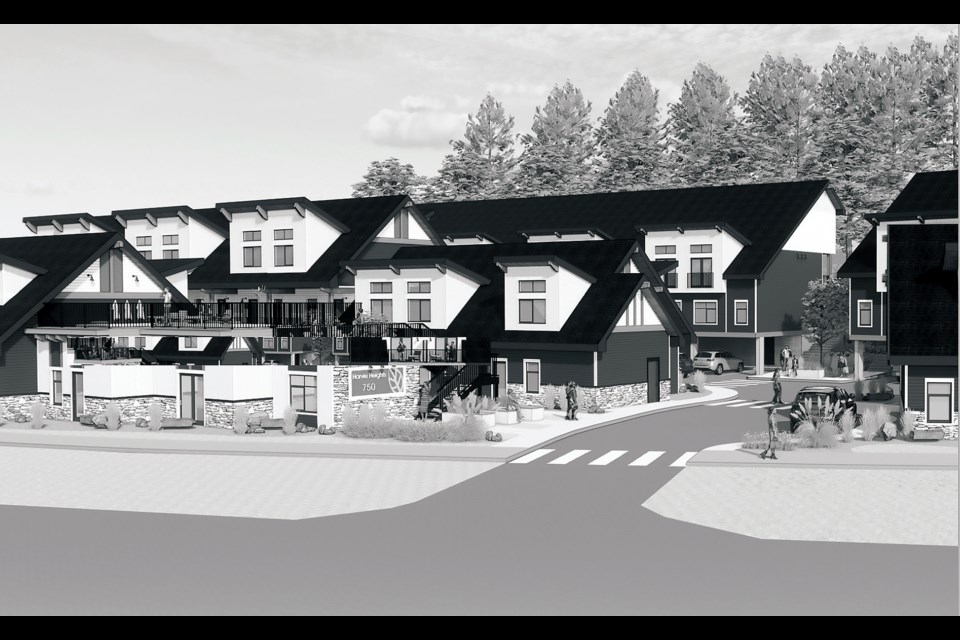HARVIE HEIGHTS – The construction of a new visitor accommodation in Harvie Heights can move forward following the approval of staff recommendations by the Municipal District of Bighorn municipal planning commission.
The development will be comprised of 55 units, consisting of one to four bedrooms, with 90 parking stalls. The number of parking stalls is 35 more than is required by the MD. As a visitor accommodation, guests can only stay for a maximum of 75 days per year.
One of the main concerns with the development was its impact on the aquifer during the retaining wall construction and the possibility of the aquifer draining.
“The City of Vancouver was required to repair the breach of an aquifer in September 2015, when the contractors and landowners vanished following the breach,” local resident Howard Hepburn stated in a letter to Basecamp Resorts. “It cost the city $10 million, just for repairs.”
Five boreholes were drilled to five metres at the Harvie Heights development site on May 19, 2021, but no water was found. An additional borehole was drilled at the top of the slope in December, where water was found at 12 metres.
“If partway through the construction in the excavation, if clay is hit, is there sufficient wells in place to determine whether or not the construction is the cause of the aquifer draining,” said planning commission member Kevin Hebb. “If it is, will the applicant be wholly responsible?”
Kelly Fiske-Nielsen, the Brownlee Law representative for the MD, responded there are funds to deal with issues during construction.
“Depending on the issue, we are talking about a hypothetical amount of cost,” she said.
Municipal staff told Hebb if the aquifer were being drained, the municipality would be notified.
“If I am hearing correctly, the proper precautions have been taken to make sure that the MD does not end up with additional costs with granting this permit?” Hebb said.
Fiske-Nielsen responded the conditions in place were to mitigate those types of risks.
In their presentation materials, the developer stated they had high confidence the proposed development would not impact the groundwater flow direction.
In all, there were 68 conditions listed for the approval of the development.
Condition six related to the upper aquifer, requiring the installation of a monitoring well at the location. This condition was altered to have a minimum of three wells, which would monitor the aquifer on a weekly basis.
The wells will be screened into the saturation zone of the upper aquifer, to 14 to 15 metres below the surface. The developer asked for a time frame for the monitoring due to the cost related to it.
“If the biggest concern with the aquifer is the retaining wall itself, and once the construction of that is complete, I don’t think we need to keep monitoring after that,” MPC member Joss Elford said. “We don’t need to keep testing once that is complete, backfilled and done.”
Excavation is expected to start in July, with the retaining wall being a six-to-eight-week process at the start of development. The condition was then added that wells would only be monitored on a weekly basis until the completion of the retraining wall, likely in September.
The municipal planning commission approved the staff recommendation on the development with the amendment in place.




